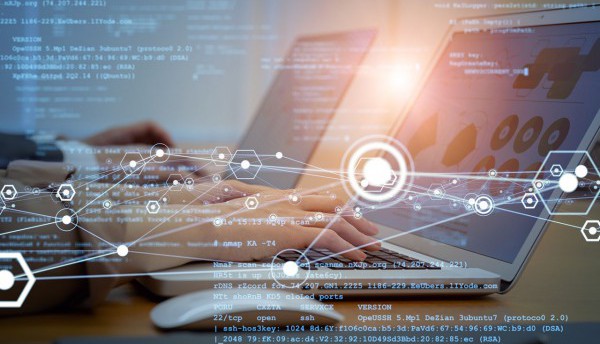
Q&A with rFpro
A digital twin (DT) is a virtual replica of a physical asset that uses real-world data and models to improve operations and aid in decision-making. It incorporates real-time and historical data, as well as engineering, simulation, and machine learning models. By creating a digital twin, the automotive industry can gain insights into the performance and behavior of physical assets, optimize operations and make more informed decisions.
The use of DTs in the automotive industry is expected to become more widespread as the digitization of vehicles continues to advance. DTs have the potential to enhance product design, manufacturing processes and vehicle maintenance, resulting in improved products and a more efficient and reliable automotive industry. As this evolution continues, a key priority will be ensuring functional safety and cybersecurity across various automotive processes. By addressing these requirements, the industry can fully leverage the benefits of DTs while maintaining the highest standards of safety and security.
To delve deeper, S&P Global Mobility initiated discussions with leading players in the DT market, including IBM, Ansys, ABB, rFpro, Digiflec and PTC. All are at the forefront of driving architectural shifts and pushing back the technical boundaries. Representatives of each company share their thoughts on the evolving landscape of DTs.
To learn more about how rFpro is developing DTs, we spoke to Matt Daley, rFpro technical director. rFpro is a member of the AB Dynamics Group plc which provides a simulation environment for the automotive and motorsport industries. It is used for the development and testing of autonomous vehicles, advanced driver assistance system (ADAS), vehicle dynamics and human factor studies. rFpro’s automotive customers are the world’s largest car manufacturers, tier 1 suppliers and sensor developers.

The following is an edited transcript of the conversation.
S&P Global Mobility: There are tremendous amounts of data created by digital twins (DTs). How do you maintain focus in development with this overload of data?
Matt Daley: rFpro’s present focus is on the creation of highly accurate digital twins of real-world driving environments, and on the provision and continual improvement of high-performance software which allows users to interact with those environments in order to generate valuable testing and training data quickly, safely and economically.
There are a few key areas that our customers are most interested in. The three biggest are the fidelity of the road surface to accurately replicate vehicle dynamics, physically accurate material properties for objects in the scene, and appropriate rendering technologies to either fully immerse a Driver-in-the-Loop (DIL) or accurately replicate the way a sensor ‘sees’ our world. We focus our efforts in these areas to ensure customers can extract maximum value from our digital twins.
For example, our road surface model, TerrainServer, represents the world at a 1-cm by 1-cm resolution and is accurate to 1 mm in the vertical. We develop our models using survey-grade LiDAR scans of the real world.
Likewise, the objects in our digital twins, such as street furniture, buildings and the road have been modelled in detail with realistic material properties. This ensures that light, infrared and radio waves are reflected in our simulation as they would in the real world. This is crucial to developing sensor systems, such as cameras, LiDAR and radar that are the basis of ADAS and autonomous driving systems.
Our multi-path ray tracing rendering technology accurately captures the nuances of the real world, such as reflections, shadows and motion blur. As a result, our platform can be used to generate large volumes of high-value synthetic training data quickly, safely and economically. Unlike real-world data, each mile driven in simulation is pre-defined to generate and reproduce multiple variants of rare but critical edge-case events that AV developers are looking for. To maximize the value of your digital twin you need a highly integrated set of tools to facilitate the generation of that data.
How is collaboration between OEMs and suppliers working with the sharing of data collected and calibrated by DTs?
Correlation is the single most important aspect of any simulation. rFpro regularly works closely with OEMs to ensure our virtual models accurately represent the real world. We have built many digital twins of both public and private proving grounds to facilitate the correlation between real-world and virtual testing, and by doing so increasing the value of both. We also work together with OEMs and their supply chains, enabling correlation between simulation work being carried out across vehicles, systems and components. This can lead to significant advances in the way that systems and components are modelled and integrated within the simulation and therefore increase its overall fidelity and value. One recent example of this has been a technical collaboration with Sony Semiconductor Solutions to integrate their sensor models into rFpro’s platform. This offers a big step forward in the simulation of camera performance, which is important in the development of sensor perception systems used in ADAS and AV applications.
How do you check for the veracity of data collected in the digital world?
At rFpro, ensuring the accuracy and reliability of the data collected in the digital world is paramount. We achieve this through a process of rigorous correlation with real-world tests. Because our models are based on public roads, proving grounds and race circuits our customers are able to replicate real-world tests they perform within our simulation environment and compare the results. This either shows a high level of correlation, or highlights areas where improvements can be made.
It is important to note that the accuracy of the digital twin is just as important as the fidelity of the system models used within it. For example, in an ADAS and AV application, the vehicle model needs to behave and move as it would in the real world. Likewise, the sensor models that are used to extract data from the world need to do so accurately, allowing for aspects such as motion blur, lens distortion, depth of field and rolling shutter effects.
Is DT technology being applied mostly to the infotainment and ADAS domains? Or do you expect significant development in other domains such as powertrain, chassis, body, etc?
Using digital twins to simulate, develop and test powertrain and chassis components and systems is well established. Our Formula 1 customers have been doing this for decades and it quickly cascaded to the development of passenger vehicles because of the huge benefits. One of the effects of COVID was that the ability of engineers to undertake real world testing was very limited for a significant period, so people had to make greater use of simulation and through this the true value of doing so became even more widely understood.
The very nature of infotainment and HMI systems means that evaluating their performance is more subjective. As a result, introducing a human test driver at the earliest stage of development provides major benefits. As the industry moves more towards a software defined vehicle, we are seeing HMI tests moving from static rigs to more dynamic DIL simulator setups where the vehicle’s motion increases the level of driver engagement in the complex driving scenarios and so more accurately creates driver behaviors that match with driving real vehicles in the real world.
What are the most promising automotive use cases for DTs?
The benefits of simulation as a tool to reduce cost and accelerate development are perhaps most valuable to the development of ADAS and AD technologies. Arguably, it simply isn’t feasible to develop, train and test autonomous vehicles without the use of simulation. Highly accurate, engineering-grade digital twins of real-world locations are a crucial part of this. It is the only way to safely subject perception and control systems to the almost limitless number of possible scenarios that can occur on our roads. Creating engineering-grade synthetic training data significantly reduces the dependence on collecting on-road data.
What should everyone in the auto industry know about DTs that they miss? And what warnings do you have for those that don’t embrace DTs?
One crucial aspect that often gets overlooked in the auto industry is the transformative potential of digital twins in the early stages of design and testing. Digital twins allow for the exploration and validation of fundamental designs and ideas that might not yet be physically possible or fully conceptualized. This capability opens up new avenues for innovation that wouldn’t be feasible to do without them.
Another significant advantage of digital twins is the ability to understand far more data points and parts of the system than a physical test could ever provide. Unlike physical testing, which requires sensors and instrumentation to capture data, simulations allow you to extract digital signals and readings from any point within the system. This means you can analyze components and interactions in ways that are impossible with physical prototypes, leading to deeper insights and a more comprehensive understanding of vehicle performance.
For those who have yet to embrace digital twins, it's essential to recognize the risks of falling behind. The auto industry is rapidly advancing, and those who do not integrate digital twins into their development processes may find themselves at a significant disadvantage. Without the insights and efficiencies offered by digital twins, companies risk slower development cycles, higher costs, and potentially inferior products compared to competitors who leverage this technology.
How does the sustainability of digital twins stack up on a CO2 basis versus base case physical development? How do you limit the carbon footprint of DT technology?
The environmental benefits of harnessing simulation are huge. A virtual autonomous vehicle can travel thousands of digital miles in a DT overnight only using the energy required to power a few PCs. Importantly, each of these pre-defined miles are quality, active miles thoroughly testing your system.
If you compare this to the energy required to power a real vehicle to cover the same mileage the difference is massive. Not to mention the CO2 impact of producing a prototype vehicle and shipping it to various test locations, as well as the particle emissions from tires and brakes produced during test mileage.
rFpro is also cloud-compatible and can be hosted on environmentally friendly servers using green energy, further minimizing the CO2 impact of testing.
When do we expect DTs to become mainstream?
I would argue that digital twins are already mainstream in many aspects of the automotive industry. Our highly-accurate digital twins of race tracks, proving grounds and public roads have been in use for over a decade and have significantly shaped how vehicle design, testing, and development are approached. Companies across the industry are increasingly integrating digital twin technology into their workflows to accelerate development times, reduce cost and drive innovation.
Could you give some examples of quantifying the savings via DTs, either in terms of time-to-market reduction or in terms of the development cost?
Premium lighting systems supplier ZKW uses rFpro to develop its headlight products. The company said that, through the use of rFpro, it expected to save millions of euros in testing and development costs and aimed to reduce the requirement for real-world tests by more than 50%. It is worth highlighting that this is for a single system, the headlights, and that the benefits of using a digital twin can be applied to most areas of a vehicle.